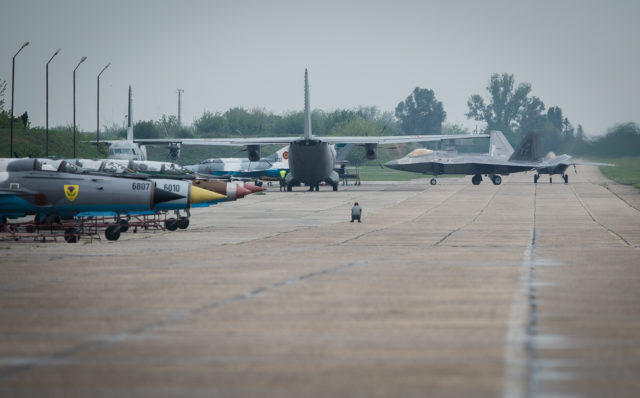
Romania’s New National Defense Strategy Irks Kremlin (Part Two)
Publication: Eurasia Daily Monitor Volume: 17 Issue: 88
By:

*To read Part One, please click here.
A deeper look at Romania’s new national defense strategy, taken up for consideration by the parliament on June 3, provides some answers as to why Russia’s reaction to this 46-page planning document has been so aggressive (see Part One in EDM, June 17).
According to the strategy (Hotnews.ro, June 4), the main aim of Romania’s foreign and security policy is to enhance the country’s position in the international system. Therefore, the top foreign and security policy priorities are enhancing Bucharest’s role as a member of the European Union, consolidating its membership within the North Atlantic Treaty Organization (NATO) and further developing the strategic partnership with the United States.
One of the most striking aspects of the 2020 national defense strategy is the inclusion of subjects not directly linked with national security or defense, such as education. The “Educated Romania” program, President Klaus Iohannis’s pet project begun in his first term, is included in the strategy (Hotnews.ro, June 4), probably in order to force it to become a policy priority for the cabinet.
Russia is indeed defined as a regional threat, a destabilizing force in the Black Sea, and the main reason for why Romania is spending 2 percent of GDP on defense and wants to deepen its strategic partnership with the United States. But beyond these passages and a condemnation of Russian actions in the Black Sea, the strategy avoids further mention of Moscow. For example, Russia is not considered an existential threat, and the document carefully avoids language that could be deemed excessive. Despite diplomatic protestations, the Kremlin is not the only state actor the strategy names as having a negative impact on world security in general and Romania’s security in particular: North Korea (for its nuclear arsenal) and Afghanistan (because of the ongoing insurgency) are also overtly listed.
Although not mentioned explicitly and named only once in the strategy (in connection with the US), China is also considered a threat. The document mentions that “state actors with regional hegemonic ambitions” are negatively impacting the world order as well as fueling tensions between US and China in the Asia-Pacific region. Coupled with Romania’s signing of a memorandum with the US concerning the security of future 5G networks (Digi24.ro, November 3, 2019) and the cancelation of a memorandum of understanding with China General Nuclear (CGN) for the building of reactors three and four of the Cernavodă Nuclear Power Plant, a project worth €6.45 billion ($7.26 billion) (Bursa, June 15), the writing is on the wall for Beijing. Bucharest will, for the foreseeable future, follow Washington’s lead when it comes to China. This is a major development in Romania’s foreign policy because Bucharest has historically had good relations with Beijing and, during the past decade, numerous cabinets entertained the promise of Chinese investments in transport infrastructure and the energy sector.
But what exactly is in Romania’s national defense strategy that had so infuriated the Russian government? A prime candidate may be that the document states in no uncertain terms that “Romania aims at consolidating its military cooperation with the United States, not just as a mere course of action derived from our status as allies, but as an operational objective to be implemented on the national territory.” In other words, Romania wants US troops to be stationed permanently on its territory; and to achieve this purpose, it has started to invest heavily and over the long term in improving existing military infrastructure on Romanian soil.
Over the next 20 years, the Mihail Kogălniceanu Air Base (MK) will be extended and modernized, at an estimated cost of around €2.5 billion ($2.8 billion) (Financialintelligence.ro, May 26). MK is not the only such military facility to undergo a makeover. The 71st Air Base, in Câmpia Turzii, will also go through the same process—a project worth €200 million over the next five and a half years, on top of a US investment of $130 million (Hotnews.ro, April 16). It was certainly no secret even prior to 2020 that Romania (same as Poland) wants US troops stationed permanently and not rotationally on its territory. The difference now is that Bucharest is willing to invest money from its state budget to enlarge the bases used by US forces in order to facilitate such a move. This shift has presumably begun to worry Russia, which does not want to see any permanent US bases in its vicinity.
Other threats identified in the national defense strategy include pandemics, terrorism, cyberattacks, the proliferation of weapons of mass destruction (WMD) and the means of their delivery, as well as hybrid operations and disinformation carried out by both state and non-state actors. The threat of inter-state war, on the other hand, is deemed to be low. In terms of risks, the document lists the rise of illiberalism in Romania’s neighborhood, developments in the Republic of Moldova that may compromise its prospects of European integration, the indefinite stagnation of the process of European integration of the Western Balkans, demographic risks, the increasing diminution of multilateralism in international relations, the undermining of state authority by certain groups, and corruption. The relegation of corruption from a security threat to a security risk has raised some concerns among anti-corruption activists (G4Media.ro, June 4) and political forces committed to fighting it (Digi24.ro, June 4).
Romania’s national defense strategy should enter parliamentary debate in the near future. The document is an improvement over the previous iteration of the national defense strategy and provides a clear assessment of Romania’s national security and defense priorities. However, its adoption may be delayed as the current Liberal cabinet lacks a majority in parliament. It remains to be seen whether the “attention” it received from Russia could aid in its quick adoption.



